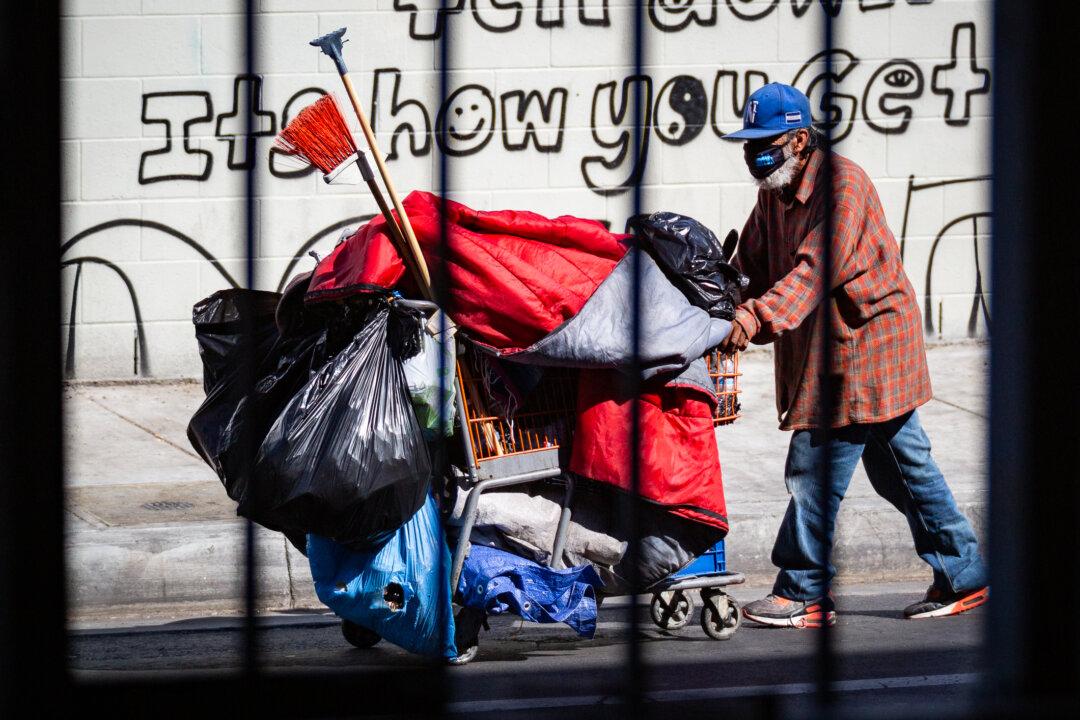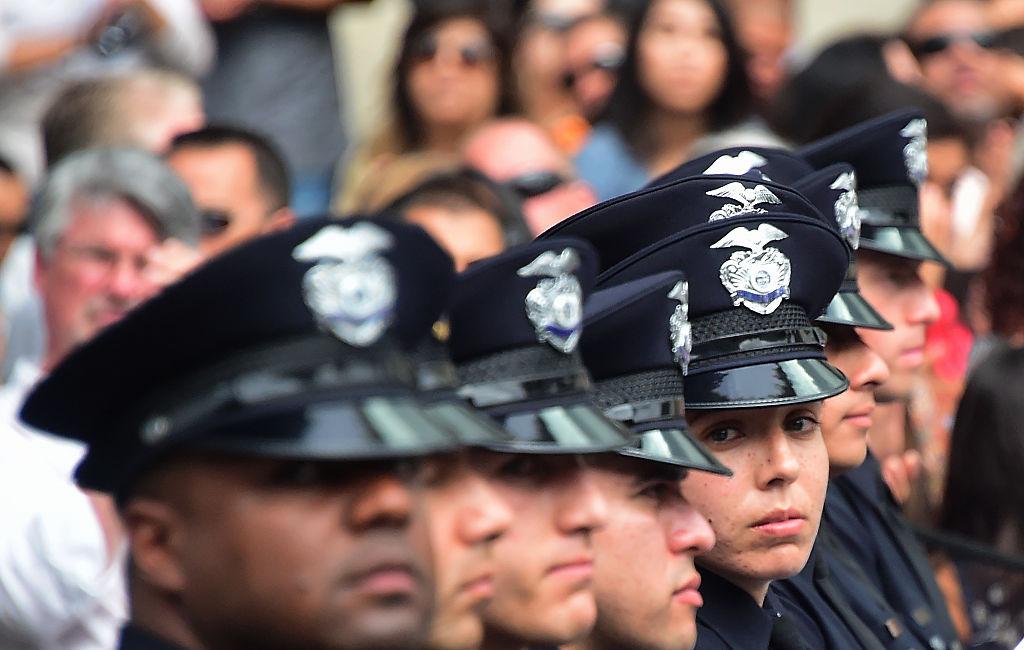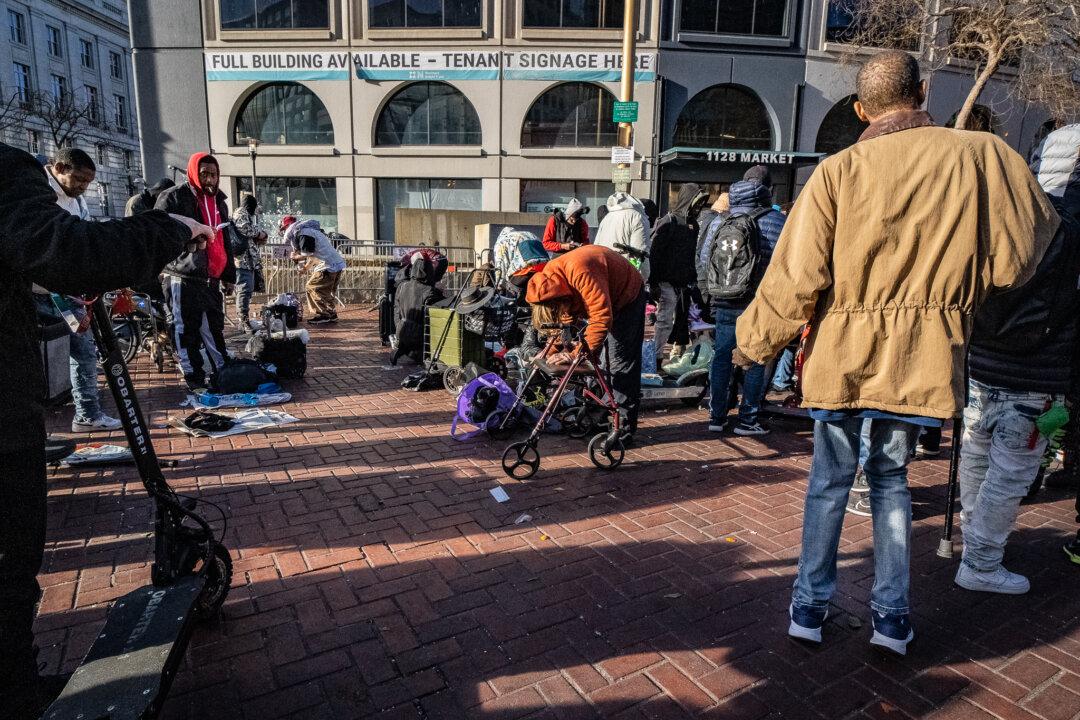After the financial collapse of a leading homeless housing provider in Los Angeles amid reports of unsafe living conditions, drug overdoses, and violence in its buildings, homeless advocates are questioning whether California’s “housing first” and “harm-reduction” approaches are alleviating or aggravating the intertwining crises of homelessness and drug addiction.
The Skid Row Housing Trust, a nonprofit providing nearly 2,000 units of permanent housing across 29 buildings, faced an annual budget deficit of $14 million. Through the city’s intervention, all those buildings were placed under a receivership by court order on April 7 under Mark Adams, president of California Receivership Group, for repairs.





